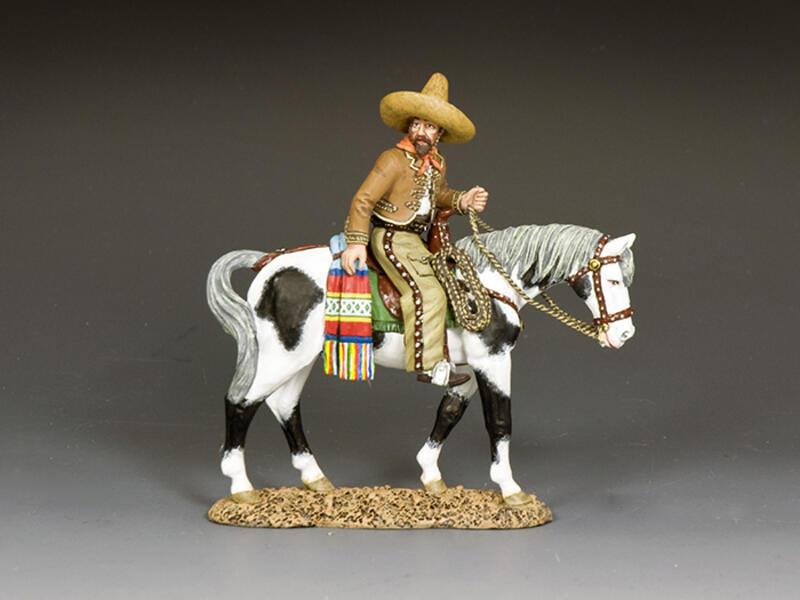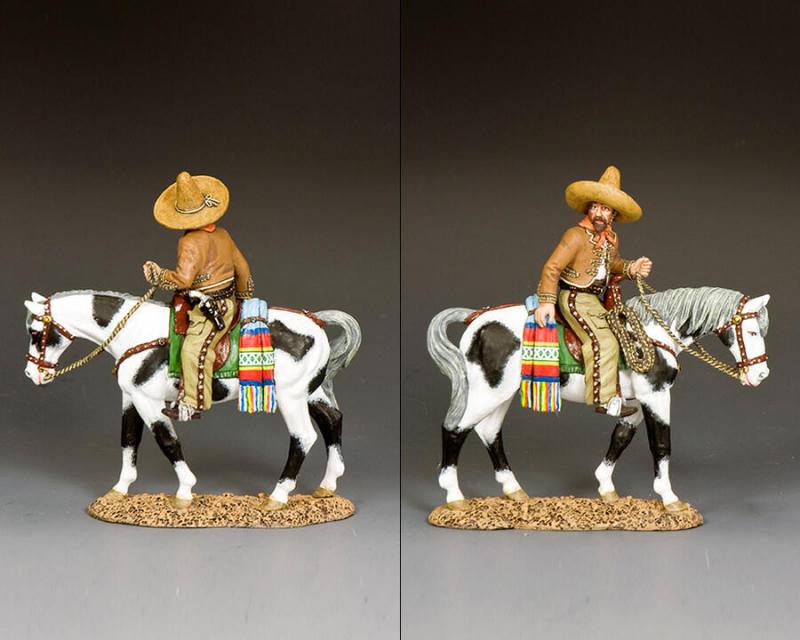Mounted Mexican Vaquero--single mounted figure
$125.00
Item Number: CD015
Mounted Mexican Vaquero
Turning in the saddle to survey the herd, this proud vaquero is dressed in typical ‘Mexican’ style with the short, embroidered jacket and the close-fitting and studded trousers (copied from Napoleonic Cavalry overalls). On his head, he wears a large sombrero and around his neck a colourful red bandanna. Behind him, on his black & white ‘Pinto’, rests a folded native blanket and around his waist a gunbelt and a holstered a .44 Navy Colt pistol.
"Before The Cowboy... There Was The Vaquero"
The Spanish word ‘Vaquero’ or the Portuguese ‘Vaqueiro’ is literally translated as a ‘horse-mounted livestock herder’ whose roots go all the way back to the Iberian Peninsula and then some time later to the one-time Spanish colony of Mexico.
The Vaquero with his skills and practical knowledge of handling and herding cattle was to become the foundation for the North American cowboy.
His origins began with the ‘hacienda system’ of ranching in medieval Spain where several regions possessed a dry climate with sparse grass which meant large herds of cattle required huge areas of land for grazing. Because of the need to cover these great distances, it was essential that the ‘herders’ would need to move around on horseback and able to work with others to gather and protect herds as well as move them from one location to another. When the Spanish came to the Americas and found similar conditions in Mexico and later Texas, it was only natural that they imported their cattle and brought over many vaqueros to look after them. Many of these vaqueros intermarried with the local natives and developed unique additional skills and knowledge that was passed down from father to son, generation to generation.
As the vaqueros moved northward, other English-speaking immigrants moved westward, mixing Anglo and Spanish traditions and teaching each other new ways and more efficient methods of handling cattle and living and working in the saddle.
By the end of the Civil War and the beginning of the great Cattle Drives, many experienced ‘vaqueros’ found their services in high demand with the top trail bosses putting together teams of cowboys to drive the huge herds of Texas ‘Longhorns’ all the way up to the railheads in Kansas and beyond.
Released in FEBRUARY 2022.

